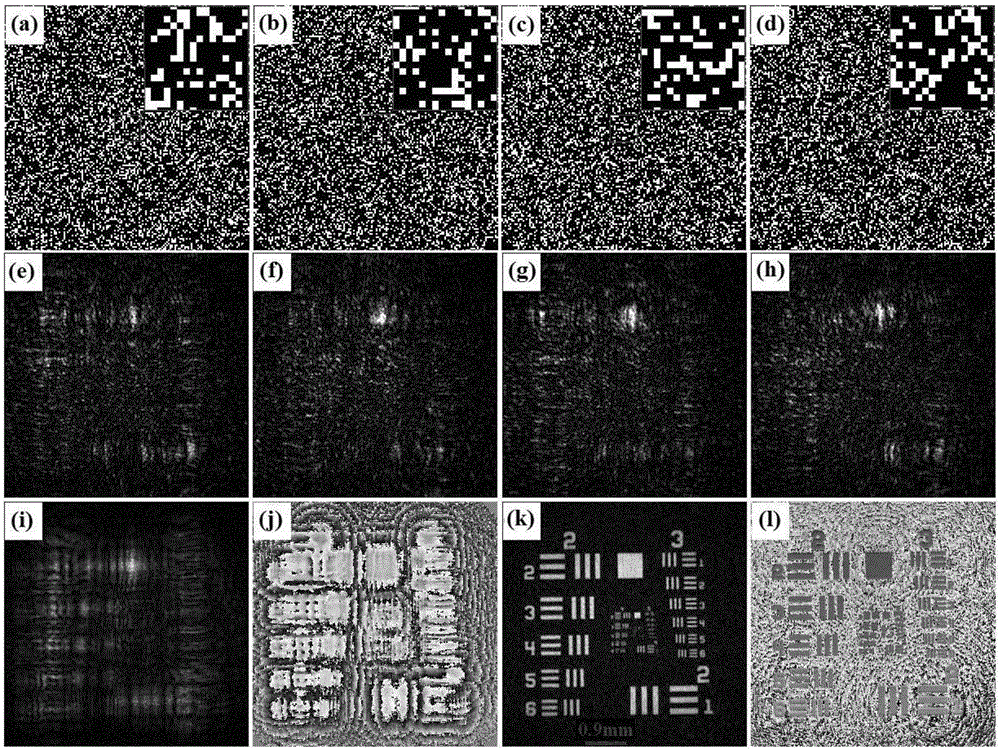Lensless diffraction imaging method based on complementary random sampling
A lensless diffraction and imaging method technology, applied in the field of diffraction imaging, can solve the problem of high redundancy of the object to be measured, and achieve the effect of improving the accuracy and iterative efficiency, and eliminating the loss of wavefront sampling.
- Summary
- Abstract
- Description
- Claims
- Application Information
AI Technical Summary
Problems solved by technology
Method used
Image
Examples
Embodiment Construction
[0051] Such as figure 1 As shown, the optical path for realizing the lensless diffraction imaging method based on complementary random sampling of the present invention is mainly composed of illumination light S, object Obj, a random sampling screen placed at the sampling surface SP and an image sensor placed at the recording surface RP. constitute. Assuming that the light passing through the object Obj passes through a Fresnel diffraction, the complex amplitude distribution of the wavefront of the object to be measured formed at the sampling surface SP is o(x, y), the transmission of the random sampling screen placed at the sampling surface SP The rate distribution is S(x, y), and the distance from the sampling surface SP to the recording surface RP is z, then the object wave front o(x, y) continues to diffract the diffracted light reaching the recording surface RP after being sampled by the random sampling screen The intensity distribution I(u,v) of the field can be express...
PUM
 Login to View More
Login to View More Abstract
Description
Claims
Application Information
 Login to View More
Login to View More - R&D Engineer
- R&D Manager
- IP Professional
- Industry Leading Data Capabilities
- Powerful AI technology
- Patent DNA Extraction
Browse by: Latest US Patents, China's latest patents, Technical Efficacy Thesaurus, Application Domain, Technology Topic, Popular Technical Reports.
© 2024 PatSnap. All rights reserved.Legal|Privacy policy|Modern Slavery Act Transparency Statement|Sitemap|About US| Contact US: help@patsnap.com










